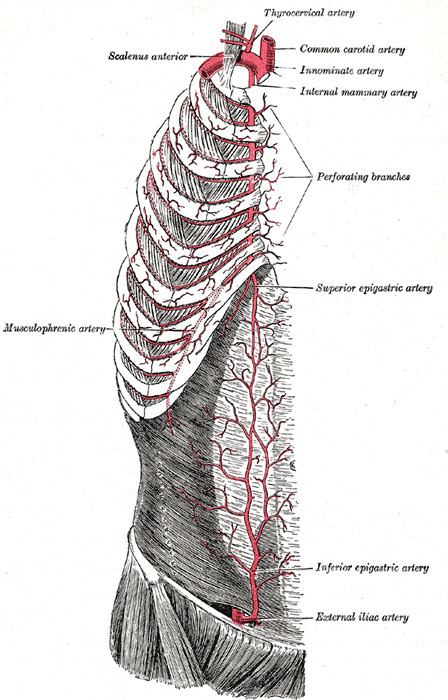Source internal thoracic TA A12.2.08.041 | Dorlands
/Elsevier a_61/12154236 FMA 10646 | |
 | ||
Vein superior epigastric vein Latin arteria epigastrica superior | ||
In human anatomy, superior epigastric artery refers to a blood vessel that carries oxygenated blood and arises from the internal thoracic artery (referred to as the internal mammary artery in the accompanying diagram). It anastomoses with the inferior epigastric artery at the umbilicus and supplies the anterior part of the abdominal wall and some of the diaphragm.
Along its course, it is accompanied by a similarly named vein, the superior epigastric vein.
Collateralization in vascular disease and aortic coarctation
The superior epigastric arteries, inferior epigastric arteries, internal thoracic arteries and left subclavian artery and right subclavian artery / brachiocephalic are collateral vessels to the thoracic aorta and abdominal aorta.
If the abdominal aorta develops a significant stenosis and/or blockage (as may be caused by atherosclerosis), this collateral pathway may develop sufficiently, over time, to supply blood to the lower limbs.
A congenitally narrowed aorta, due to coarctation, is often associated with a significant enlargement of the internal thoracic and epigastric arteries.
